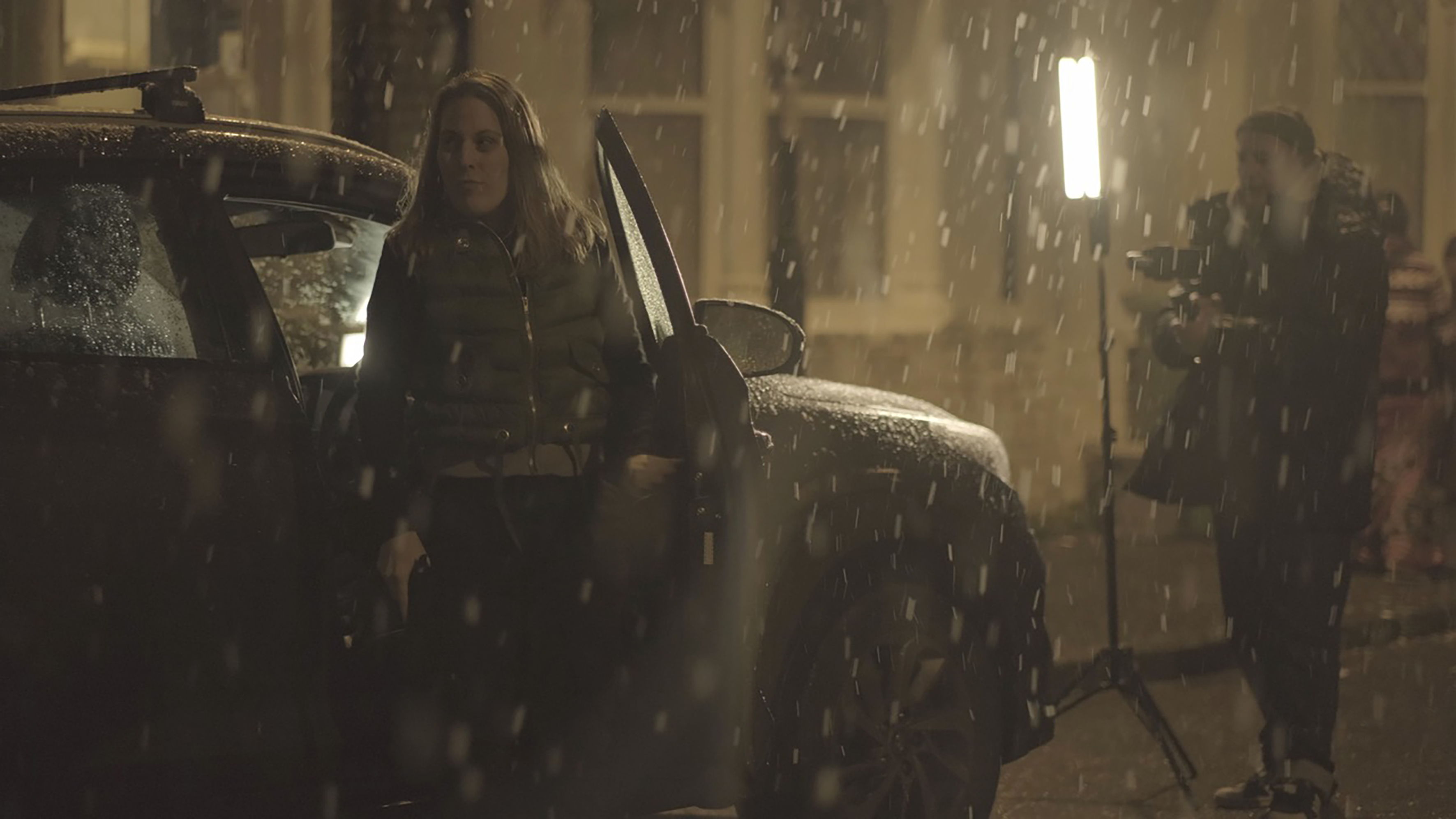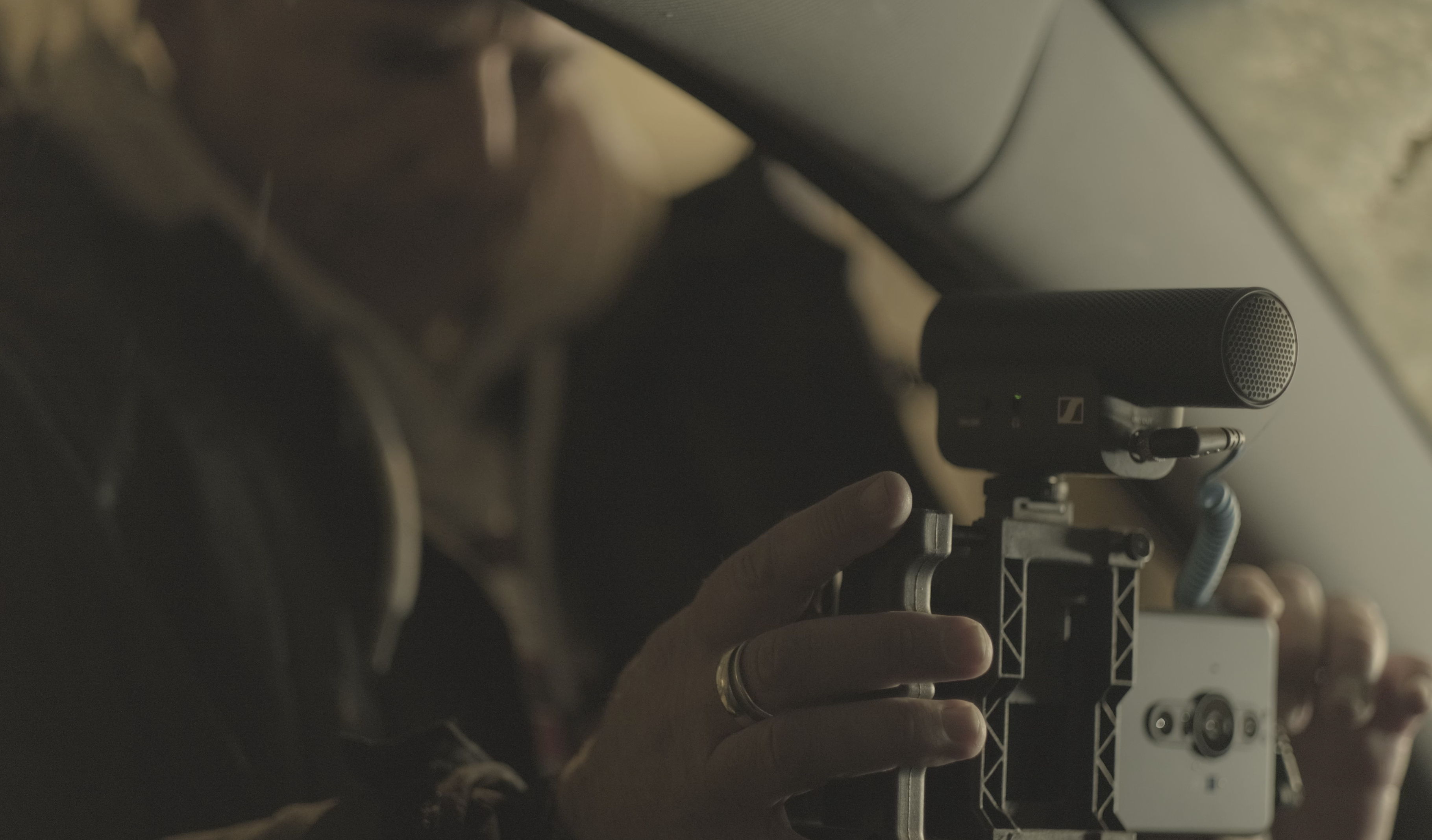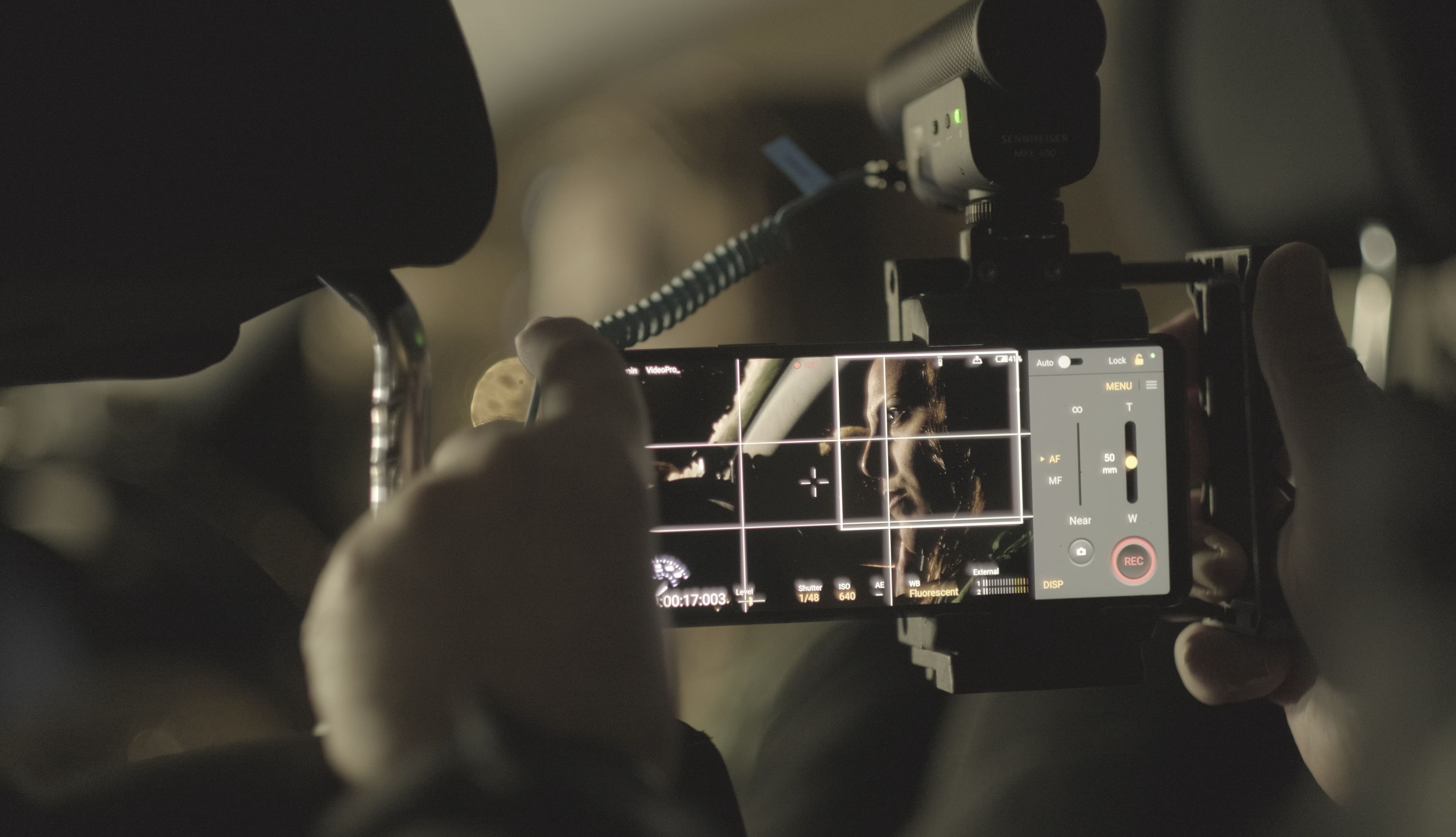Sennheiser MKE 400 microphone makes smartphone audio cinematic for award-winning filmmaker Cassius Rayner

In his latest short film “The Missing”, Rayner showcases how smartphones can revolutionize storytelling
Cassius Rayner is a filmmaker and mobile cinematographer who has specialized in mobile filmmaking since 2014. Combining agility with professional-grade audio, he deploys various smartphones during the process, including Apple and Sony products, but the microphone he always finds himself using is the compact and portable Sennheiser MKE 400. One of his most recent short films, The Missing, tackles the issue of children who are groomed into gangs and go missing from their families. Shot entirely with the MKE 400 and a Sony Xperia Pro-I, it has already won three international film awards and there are hopes of making it into a full-length feature.
While the picture quality of mobile phone cameras is now on par with DSLR cameras, the inbuilt microphone technology has obvious drawbacks. To combat this issue, Rayner looked to outboard equipment to supplement his phone and the MKE 400 has a host of features that make it not only sound fantastic, but also convenient to use.
“Before I created my own films, I worked on mainstream TV broadcasts for many years. We always used Sennheiser equipment, so when I started out with mobile filmmaking, I decided to cut through the noise and see what Sennheiser had to offer.”

This led Rayner straight to the MKE 400, a mini-shotgun microphone designed for content creators on-the-go. The MKE 400 features a built-in windshield and shockmount to reduce wind and handling noise, so it is ideal for shooting in less than perfect conditions and – in combination with the included furry windshield – externally on location. It is a simple tool to increase quality, without impacting the portability of the mobile phone rig.
“Mobile shooting is an incredibly agile medium and The Missing was shot in five hours,” Rayner continues. “At a time when the film industry is suffering, it is imperative to have a way to get stories out there and really push boundaries. With your phone, you can shoot concepts or sequences that excite and engage others, anything is possible.”

Rayner has been shooting professionally with mobile phones since 2014, when he really got interested in how the technology was advancing. It is not just filmmaking, he has also worked on music videos, documentaries, drama and brand content.
“I was fascinated by the technology and could see a real future in it, especially for documentary. I took a lot of risks and decided to upskill myself. Interestingly, the skill sets are very different, so the swap from camera operation to phone-lens is not simple and many of the skills did not automatically transfer.”
Rayner shares what he has learnt with young and aspiring filmmakers. His work with the Goethe Institute led him to teaching filmmaking techniques in Kinshasa, where he showed students and educators that telling stories and making documentaries does not need a mountain of equipment. Broadcast-quality films can be produced with the addition of a few items, most importantly a battery pack and portable hard-drive.
“Now that the file sizes are so much larger, even a one-terabyte hard drive will only give you 80 minutes of footage, so you need an external storage solution, plus a battery pack, then the mic, headphones, and maybe a light. With all those adapters and cables, it’s inevitable that something will become corrupted or disconnect.”

His choice to use the MKE 400 means that one connector has been removed, as monitoring is provided onboard via a 3.5-mm jack connection. This enables single-person shoots and gives Rayner control of his audio. The super-cardioid polar pattern of the MKE 400 significantly enhances directionality, effectively isolating the desired sound source and minimizing background noise. This ensures clear and focused audio capture, which is essential for the precision required in this style of filming.
“The MKE 400 is my go-to; they’re durable, compact and the sound quality is great,” he says. “The technology with phones means that there is a limit to the amount of equipment you can plug into them, so the direct monitoring is a massive bonus. I love the fact that you can plug straight into it and know that your live sound is up to recording quality. I don’t always have the budget for an additional sound recordist, so actually being able to hear live is essential.”
The Missing is just one of the latest in a long line of projects for Rayner, who believes that his mobile filming techniques have taken him to places that traditional, less streamlined rigs might not have been able to go. His teaching has also enabled him to inspire the next generation of filmmakers who might not have access to more traditional film methods but, with a few simple bolt-ons, are learning to elevate the phone in their pocket to professional film standards.

“Generally, as a filmmaker, working with smartphone technology has allowed me to cover stories that I don’t feel I could have captured using mainstream cameras,” he says. “I have worked in war-torn countries and with NGOs on medical rescue missions. My passion drove through to engage, inspire and excite young, aspiring filmmakers in how to use the phones that they already own to shoot really good content. It’s a great way to communicate with people who might not otherwise have a route into the film industry.”
“I’ve had some incredible mentors. They gave me their time because they’re absolutely fascinated by the process and possibilities of shooting features in this way,” Rayner concludes. “Everyone is still paid their wages, you still need a crew, you still need your actors, but you are able to bring the costs down. Using Sennheiser microphones is a way to keep costs down, too. I always tell my students about the different MKE microphones in the range, there is something for every situation.”
Utilizing such a fast-moving medium has opened doors creatively for Rayner. He sees many more projects in the future, as the industry warms to the idea of a much more nimble way to tell stories and, with his Sennheiser microphones ensuring that he always has the best quality sound, Rayner will continue to push boundaries and film incredible stories.
(Ends)
Watch the behind-the-scenes video here.
The high-resolution images accompanying this media release can be downloaded here.
Apple is a trademark of Apple Inc., registered in the U.S. and other countries and regions.
Sony and Xperia are registered trademarks of Sony Corporation.

Daniella Kohan
Communications Manager - Americas & ANZ, Sennheiser Electronic Corporation

Kirsten Spruch
Media & Influencer Relations Manager, Sennheiser

Cassius Rayner_The Missing.pdf
PDF - 1.3 Mb
Cassius Rayner_The Missing.docx
DOCX - 4.7 Mb


